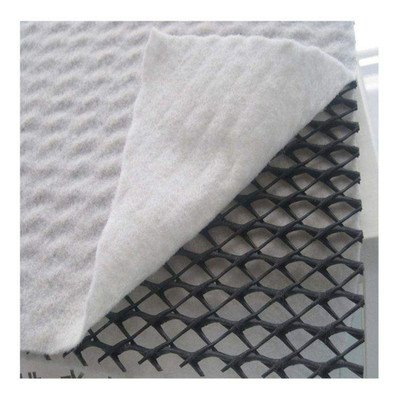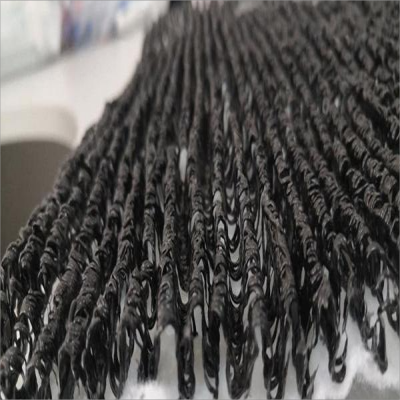Composite wave drainage mats are commonly used materials in engineering. So, what are their functions?
1. Structure and characteristics of composite wave drainage mat
The composite wave drainage pad is a structure with a fixed wave channel interwoven by a melt laying process. Therefore, the drainage pad has very good pressure resistance, high opening density, and multi-directional water collection and horizontal drainage functions. Some composite wave drainage pads also combine three-dimensional polypropylene mesh pads with non-woven geotextiles . Through thermal bonding, it can form a three-dimensional drainage structure that is reverse filtration, drainage and protection. This composite structure not only enhances the strength and durability of the drainage pad, but also improves its drainage efficiency and scope of application.
2. The main function of composite wave drainage pad
1. Efficient drainage
The waveform structure of the composite wave drainage pad can increase the tortuousness of the water flow path, slow down the water flow speed, and improve drainage efficiency. The internal drainage channel is designed to quickly collect and drain groundwater or rainwater, reducing soil moisture content and preventing flooding. Therefore, it can be used in water conservancy projects, road construction, basement waterproofing and other fields.
2. Enhance structural stability
The corrugated structure can increase the contact area between the drainage pad and the surrounding soil, increase friction, and enhance the overall stability of the structure. Through drainage, the soil moisture content can be reduced, and the stability of the foundation and slope can be consolidated. In the slope protection of highways and railways and other traffic trunk lines, the use of composite wave drainage mats can prevent slope collapse and soil erosion and ensure driving safety.
3. Isolation and protection
The composite wave drainage pad can act as an isolation layer between different materials to prevent mixing and contamination between different materials. In underground engineering, it can act as a waterproof layer to protect the underground structure from moisture erosion. The drainage pad can also disperse and reduce the pressure on the foundation by the upper load and improve the foundation’s bearing capacity.
4. Environmental protection and ecological restoration
In environmental protection projects such as ecological restoration and landfills, composite wave drainage mats can be used to isolate pollutants and promote ecological restoration. Its acid and alkali resistance and corrosion resistance can maintain stable performance of drainage mats in harsh environments, providing long-term and reliable drainage support for ecological restoration projects.
III. Application
1. In water conservancy projects such as reservoirs, embankments, and river management, the use of drainage mats can prevent floods, protect embankments, and stabilize riverbeds.
2. In the construction of highways, railways and other transportation infrastructure, drainage mats can improve the stability and safety of slopes.
3. In waterproofing and drainage projects of underground structures such as basements and underground garages, composite wave drainage mats can also be used.
Post time: Feb-24-2025





